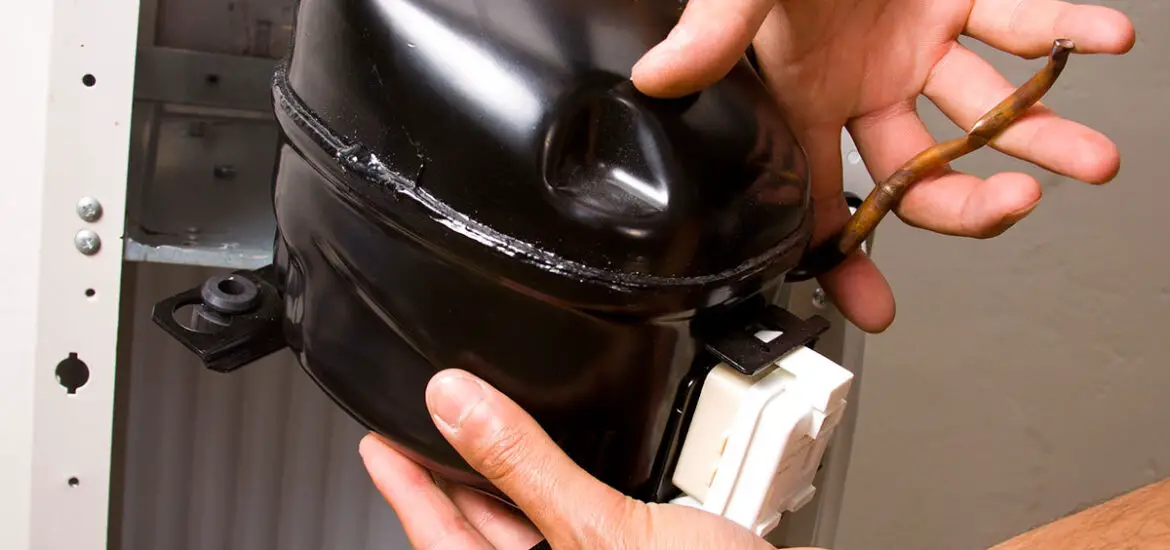Ever had a moment where you open your fridge, anticipating a blast of cold air, but instead, you’re met with a warm breeze? Yikes! You could be dealing with a faulty refrigerator compressor relay. This guide will take you through the process of how to check refrigerator compressor relay with ease, ensuring you’re not left with a warm soda ever again!

Table of Contents
Introduction to the Refrigerator Compressor Relay
What is the refrigerator compressor relay? This section has the answer and more.
The Function of a Compressor Relay
The compressor relay is like the starter pistol at a race, signaling your fridge’s compressor to get to work. It does so by helping to regulate the electrical current flowing to the compressor, essentially managing when it should kick in and start the cooling process.
Importance of Compressor Relay in Refrigerator
The compressor relay in your fridge is more crucial than you may think. This small part plays a major role in getting that refreshing cold air circulating. Acting like a switch, it powers up your compressor, the big gun that actually cools your fridge. Now you see why it’s important?
Signs of a Faulty Compressor Relay
So, how do you know when your compressor relay starts acting up? A fridge that isn’t cooling is a dead giveaway. Additionally, if you hear a constant clicking sound coming from the back of your refrigerator, it’s like your appliance crying for help – it’s the relay!
How a Faulty Compressor Relay Affects Your Refrigerator
Picture this: your compressor relay fails. Without this vital component, your compressor is left in the dark, unable to do its job. The result? Your refrigerator’s temperature starts to rise. Your food starts to spoil. It’s a refrigerator apocalypse.
Check out these other related articles…
Can a Refrigerator Compressor be Repaired? [Answered]
Should a Fridge Compressor Be Hot? All You Need to Know
Refrigerator Compressor Cold to Touch: Reasons & Solutions
Compressor Fridge vs 3 Way Fridge: An In-depth Comparison
Refrigerator Compressor Function: All You Need to Know
How to Check Refrigerator Compressor Relay
Now that you know what a refrigerator compressor relay is, let’s discuss how to check it for faults.
Safety Measures Before Checking Compressor Relay
Before we venture into this, remember that safety always comes first. Before fiddling with your fridge, make sure it’s unplugged. Because messing with electrical appliances while they’re still connected to the power? Not cool.
Gathering Necessary Tools
Ready to play detective? You’ll need a multimeter (your sidekick in this investigation), protective gloves (to ensure safety), and a screwdriver (to access the relay).
Multimeter
A multimeter is like your high-tech magnifying glass, letting you see if the relay is in good shape or not.
Protective Gloves
Think of these gloves as your trusty shield, keeping you safe from any potential electrical shocks.
Screwdriver
And, of course, your handy dandy screwdriver, which helps you access the relay tucked away in the back of your refrigerator.
Locating the Compressor Relay in Your Refrigerator
The compressor relay is usually at the back of your refrigerator, nestled near the compressor. Remove the back panel with your screwdriver and you should spot it. Got it? Great! Let’s move on.
Removing and Testing the Compressor Relay
So, you’ve found the relay. Now, it’s time to remove it and conduct our little investigation.
Instructions for Removing the Relay
Disconnect the relay from the compressor carefully, it should pop off without much force. And voila, you’ve successfully removed the relay!
How to Use a Multimeter for Relay Testing
Now, it’s time to bring out your trusty multimeter. Set it to the ohms setting (usually represented by the Ω symbol). Take the probes of the multimeter and connect them to the relay’s terminals.
Understanding Multimeter Readings for Relay Test
As you connect the probes, keep an eye on the multimeter’s display. If it shows a reading between zero and one, your relay is in good shape. But if you get a reading of infinity (often shown as a 1 and an empty space on digital multimeters), that’s a telltale sign of a faulty relay.
Interpreting the Results of Your Compressor Relay Test
If the results confirm a faulty relay, it’s time to get a replacement. If the relay is okay, the issue might lie somewhere else in the fridge. Remember, sometimes, appliances just need a little bit of troubleshooting to get back on their feet!
Replacing a Faulty Compressor Relay
Got a faulty relay on your hands? Don’t sweat it. Here’s what to do.
When to Consider Replacing the Compressor Relay
If your multimeter gave an infinity reading, your relay has crossed the bridge to appliance heaven. In such a case, a replacement is your best bet.
Choosing a Suitable Replacement Relay
When choosing a replacement, it’s like shopping for shoes; you want the perfect fit. The relay must be compatible with your fridge’s model. You can find this information in the user manual or the manufacturer’s website. Or, simply take the faulty relay to the appliance parts store. They’ll help you find a match.
Steps to Replace the Compressor Relay
Replacing the relay is almost as easy as removing it. Simply connect the new relay to the compressor, replace the back panel, and plug your fridge back in. Give it some time, and soon, you’ll feel the cool air blowing again. Feels good, right?